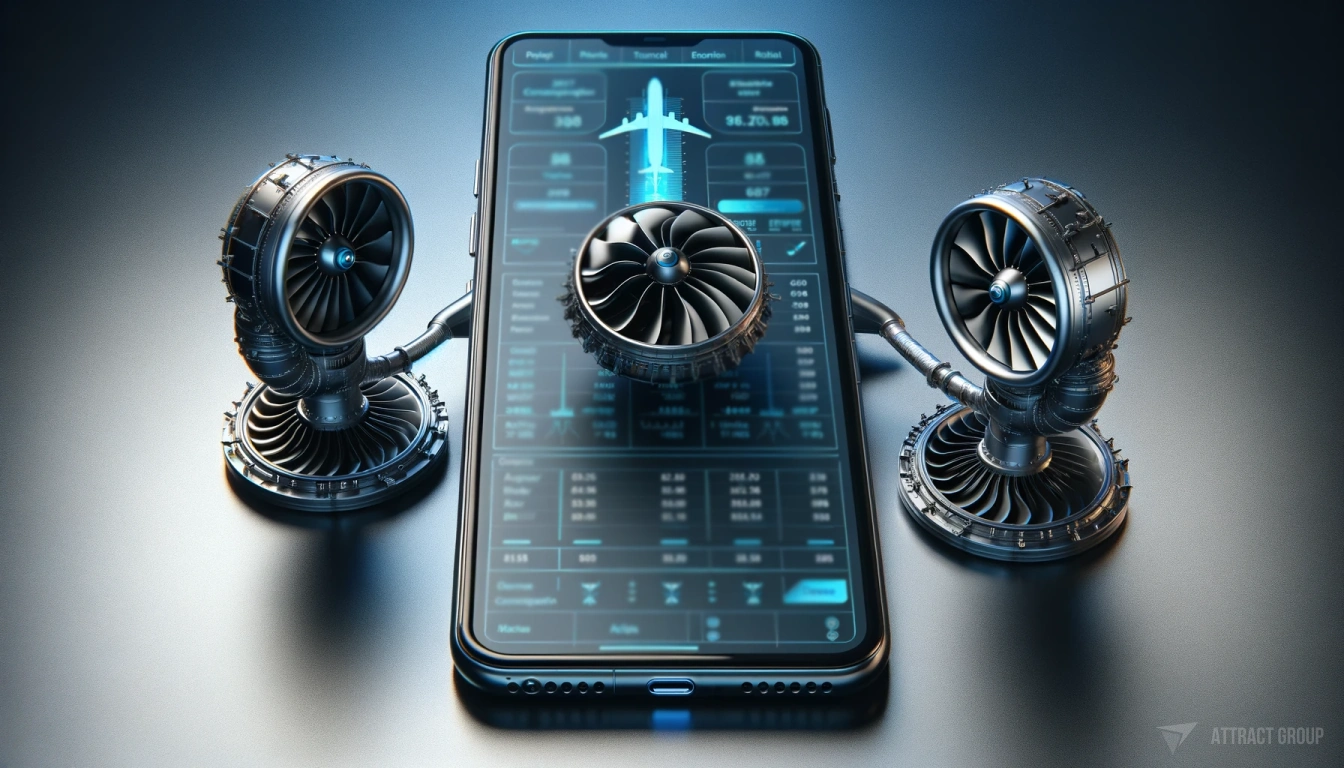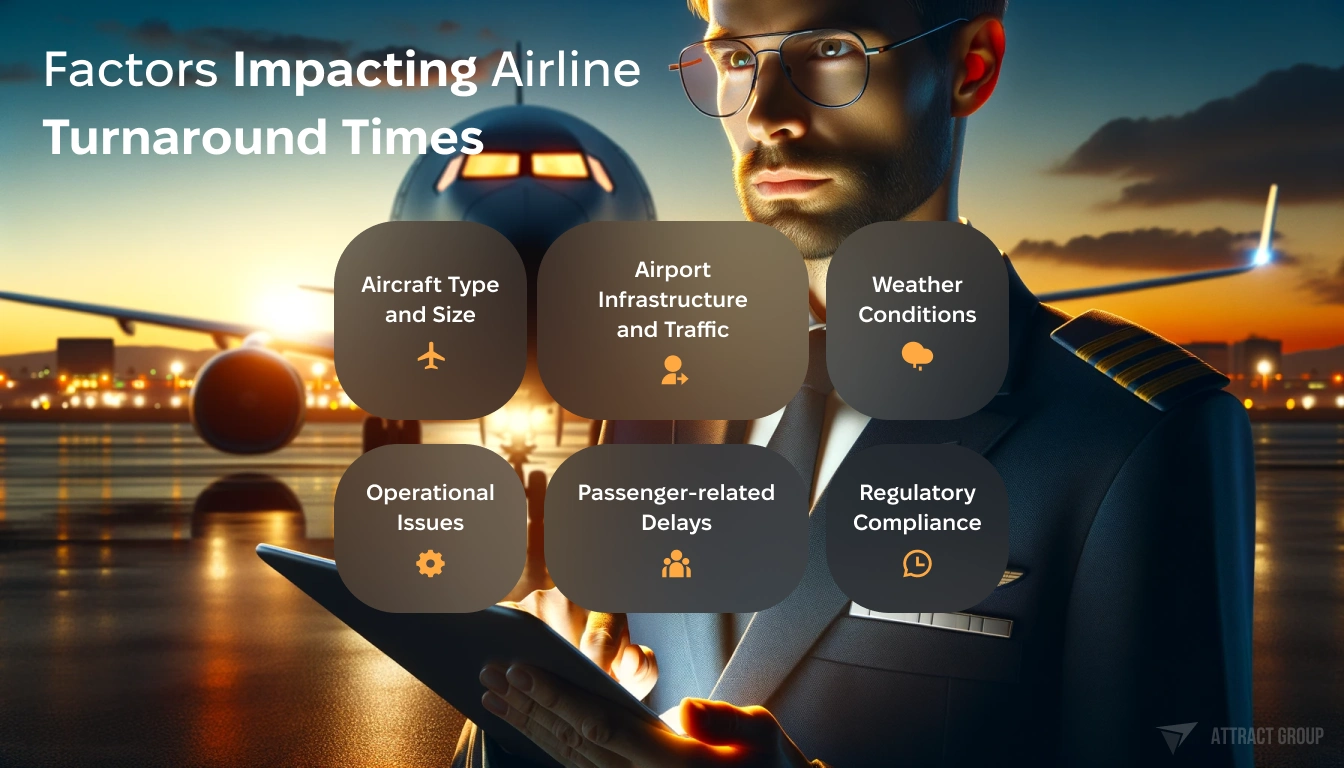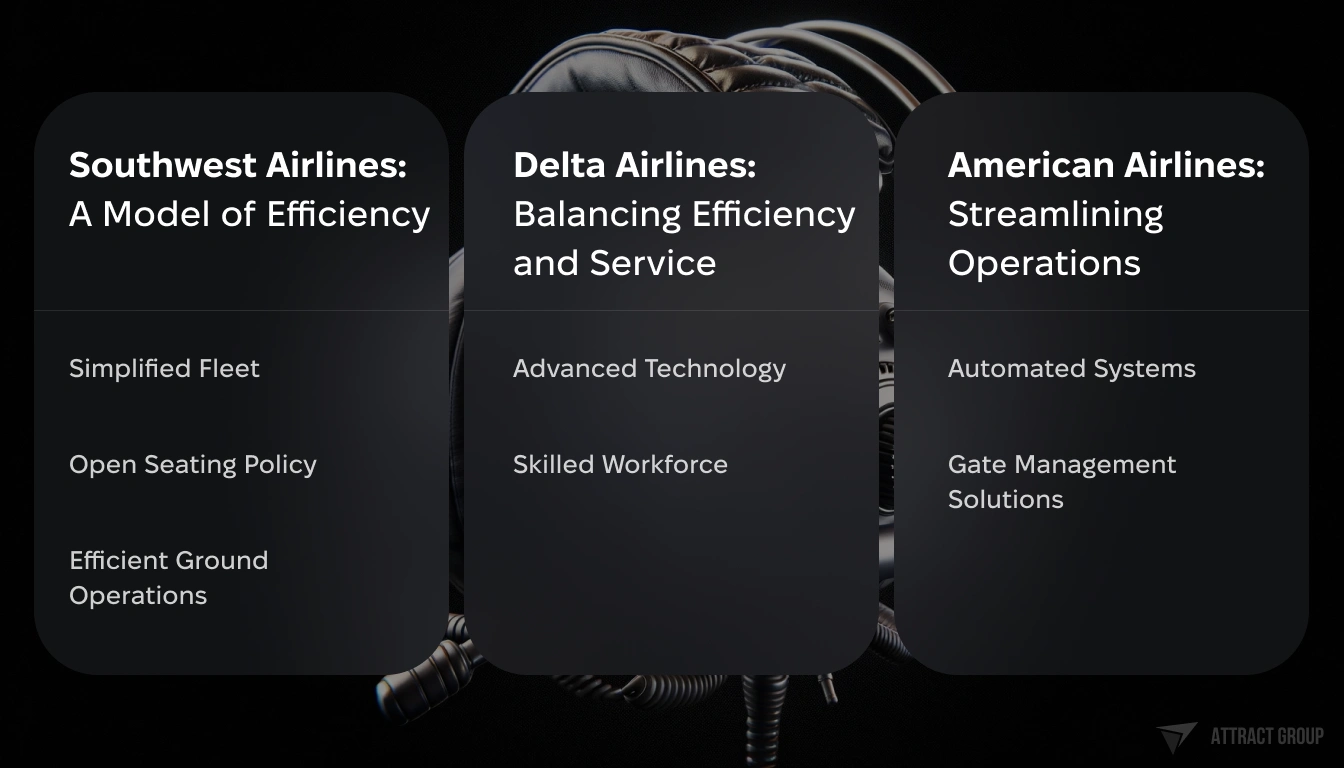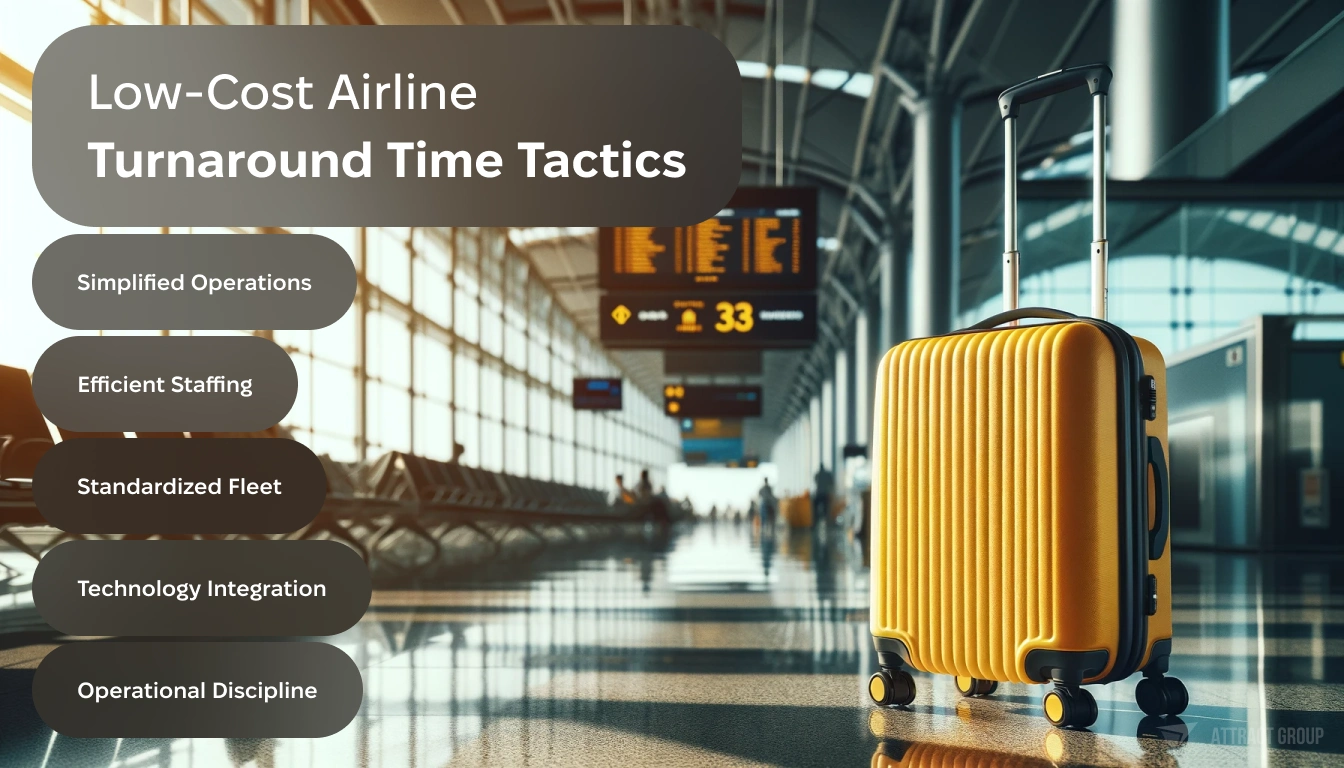How Software Solutions Slash Airline Turnaround Time and Improve Efficiency
 20 November 2023
20 November 2023In Aviation, every second counts, particularly regarding airline turnaround time. This crucial metric, representing the period from an aircraft’s arrival at the gate to its next departure, is fundamental in determining an airline’s efficiency and profitability. Efficient turnaround processes ensure on-time departures and customer satisfaction and significantly impact an airline’s operational costs.
This time-sensitive process involves disembarking passengers, unloading and loading baggage and cargo, refueling, and essential maintenance checks. Each of these steps must be meticulously synchronized to avoid delays. In an industry where “time is money,” the ability to quickly turn around aircraft is a competitive advantage.
For instance, low-cost carriers, known for their quick turnaround strategies, often achieve turnaround times as short as 25 minutes, contrasting with the average 40 minutes observed for traditional airlines. This efficiency maximizes aircraft utilization and enhances on-time performance, a key determinant of airline ranking and passenger preference.

How Software Solutions Contribute to Reducing Average Turnaround Times
Integrating advanced software solutions has been a game-changer in slashing airline turnaround times, streamlining ground operations, and enhancing overall efficiency. These digital tools are crucial in coordinating various turnaround activities, such as passenger disembarkation, baggage and cargo handling, refueling, and cleaning.
By employing sophisticated software for ground operations, airlines can closely monitor each step of the turnaround process, ensuring that tasks like unloading, refueling, and boarding are completed swiftly and safely.
One pivotal aspect is the utilization of departure control systems, which significantly improve the efficiency of passenger boarding and luggage handling. These systems enable real-time passenger flow and baggage tracking, reducing delays and ensuring timely gate closure.
Moreover, turnaround coordination software is vital in synchronizing ground staff activities, ensuring ground handling, including catering supplies and refueling trucks, operate seamlessly and without delay.
The integration of artificial intelligence and other digital tools in turnaround management can significantly enhance an airline’s on-time performance. It’s reported that airlines can improve their on-time performance by 3-9% and concurrently reduce costs by decreasing ground handling-related delays by 35%. This is primarily due to the efficiency of real-time passenger flow and baggage tracking, ensuring timely gate closure and better synchronization of ground staff activities.

Proximity sensors, part of the ground handling advancements, also contribute to ramp safety and efficient aircraft positioning at the gate. These technological advancements are at the forefront of reducing delays and improving overall turnaround efficiency, showcasing how every minute saved on the ground is integral to the airline’s operational success.
Defining Airline Turnaround Time
Airline turnaround time is the period required to unload an aircraft after its arrival, perform all necessary maintenance and checks, and then reload it for the next flight. This time includes various tasks such as refueling, cleaning, baggage handling, and boarding of passengers.
The turnaround time is crucial for airlines as it impacts the aircraft’s utilization efficiency. Shorter turnaround times allow airlines to operate more flights with the same aircraft within a day, which can be particularly significant for low-cost carriers that aim to maximize efficiency and reduce costs. Traditional airlines might have longer turnaround times due to a range of factors, including more extensive services offered on board and larger aircraft sizes. Reducing turnaround time without compromising safety and service quality is a key focus for operational efficiency in the airline industry.
Components of Airline Turnaround Time
Turnaround time encompasses several critical operations, each contributing to the overall duration. Here’s a breakdown of these components:
| Component | Description |
| 1. Passenger Disembarkation | The process of passengers leaving the aircraft. |
| 2. Baggage and Cargo Unloading | Removal of luggage and cargo from the aircraft. |
| 3. Cleaning and Security Checks | Ensuring the cabin is clean and secure for the next flight, |
| 4. Refueling | Filling the aircraft with the necessary fuel for its next journey. |
| 5. Catering Services | Loading food and beverages for passengers. |
| 6. Maintenance Checks | Conducting essential safety inspections. |
| 7. Passenger Boarding | The process of getting passengers on board for the next flight. |
| 8. Baggage and Cargo Loading | Loading luggage and cargo for the next destination. |
| 9. Aircraft Pushback | The aircraft is being pushed back from the gate to the taxi. |
Each element must be executed precisely and efficiently to ensure a quick turnaround. Delays in these processes can significantly impact the overall turnaround time, affecting the airline’s schedule and operational costs.
Learn more about how we can optimize each component of your turnaround process
Factors Impacting Airline Turnaround Times

Several factors can adversely impact airline turnaround times, creating challenges in maintaining efficient operations. Understanding these factors is vital for airlines to devise strategies that mitigate delays and optimize performance.
- Aircraft Type and Size: Larger aircraft or those with complex configurations may require longer turnaround times due to extended boarding and disembarking times and more extensive baggage and cargo handling requirements.
- Airport Infrastructure and Traffic: Airports with limited resources or high traffic volumes can lead to delays in gate availability, ground handling services, and airspace congestion, all contributing to extended turnaround times.
- Weather Conditions: Adverse weather conditions, such as fog, snow, or heavy rain, can significantly slow down ground operations, leading to delays in aircraft turnaround.
- Operational Issues: Mechanical issues, staffing shortages, or inefficient ground handling coordination can lead to significant delays in the turnaround process.
- Passenger-related Delays: Issues like late passenger arrival, slow boarding processes, or problems with baggage can extend the turnaround time.
- Regulatory Compliance: Adherence to safety and security regulations can also add to the time taken for aircraft turnaround.
The airline industry’s average turnaround time varies based on the airline model and aircraft type. The least turnaround time recorded is often by airlines that have fine-tuned their operations and use advanced software solutions to streamline each component of the turnaround process.
Case Studies: Airline Turnaround Times
1. Southwest Airlines: A Model of Efficiency
Southwest Airlines is renowned for its exceptionally quick turnaround times, averaging around 25 to 30 minutes. This efficiency is a cornerstone of its business model, allowing for more flights per aircraft per day and significantly contributing to its low-cost structure. Southwest achieves this through several strategic approaches:
- Simplified Fleet: Operating a single aircraft type (Boeing 737) simplifies maintenance and training, leading to quicker turnaround.
- Open Seating Policy: This unique boarding process reduces the time spent on passenger boarding.
- Efficient Ground Operations: Southwest’s ground crews are known for their swift baggage handling and aircraft preparation, thanks to practical training and resource allocation.
2. Delta Airlines: Balancing Efficiency and Service
Delta Airlines, a major carrier, maintains an average turnaround time of approximately 40 to 50 minutes. Despite operating a more diverse fleet and offering extensive services, Delta employs several tactics to ensure efficiency:
- Advanced Technology: Delta optimizes its turnaround processes by utilizing sophisticated scheduling and operations management software.
- Skilled Workforce: Investing in employee training ensures that ground operations are quick and safe.
3. American Airlines: Streamlining Operations
With a varied fleet and extensive network, American Airlines generally sees turnaround times of 40 to 55 minutes. Their focus has been on:
- Automated Systems: Implementing automation in baggage handling and check-in processes.
- Gate Management Solutions: Efficient gate assignments and real-time adjustments to minimize delays.
These case studies exemplify how different airlines approach the challenge of minimizing turnaround time, each tailoring their strategies to their operational models and customer service standards.

Airline Response to Turnaround Time Challenges
Airlines continuously adapt to operational challenges to meet tight turnaround times. Emphasizing the role of advanced technology, such as AI and automation, significantly enhances operational efficiency and turnaround times. By integrating AI and automation solutions, airlines can streamline processes like passenger boarding, baggage handling, and maintenance checks. This adoption ensures adherence to industry-standard turnaround times and maintains on-time performance and overall customer satisfaction.
Contact us for innovative approaches to optimize your airline’s turnaround time
Tech Solutions for Enhanced Turnaround Times
In the quest to improve airline turnaround times, technology plays a pivotal role. Airlines increasingly turn to innovative software solutions, contributing to quicker and more efficient turnaround processes. One key area is using UI/UX design in developing user-friendly interfaces for ground staff, ensuring quick access to vital information and streamlined communication. This enhancement in user interface design aids in quicker decision-making and more efficient execution of tasks on the ground.
Another significant advancement is the deployment of DevOps and cloud services in the airline industry. These technologies enable real-time data sharing and better coordination among various teams involved in the turnaround process. With cloud-based platforms, airlines can monitor operations in real-time, anticipate issues, and deploy resources more effectively, reducing delays and improving turnaround times.
Furthermore, effective project management is crucial in orchestrating the many components of aircraft turnaround. By employing advanced project management techniques, airlines can ensure that every aspect of the turnaround process, from gate management to refueling and boarding, is executed precisely and efficiently.
Discover how our expertise can streamline your turnaround times
The Impact of Digitalization on Airline Turnaround Time
The digital transformation in the aviation industry has had a profound impact on reducing airline turnaround times. The correlation between digital advancements and operational efficiency is evident, with airlines leveraging various digital tools to set new benchmarks for turnaround times.
One critical aspect of this digitalization is implementing quality assurance services in software development. This ensures that the software solutions for turnaround activities are reliable, efficient, and error-free, leading to smoother operations and fewer delays.
Additionally, the role of support and maintenance services is pivotal in sustaining the performance of these digital solutions. Continuous support ensures that the systems function optimally and adapt to the dynamic requirements of airline operations. Regular maintenance and updates help mitigate issues that could lead to operational delays.
Digital tools have enabled airlines to optimize various processes, from passenger handling and baggage management to ground operations and flight preparations. This digital shift is about implementing new technologies and changing the approach to managing turnaround times, making it more data-driven and responsive.
Low-Cost Airline Turnaround Time Tactics
Low-cost carriers have mastered the art of rapid turnaround, employing strategies that balance cost-saving with efficiency. These airlines minimize ground time to maximize aircraft utilization and reduce operational expenses. Key tactics include:
- Simplified Operations: Low-cost airlines streamline their turnaround processes by reducing the complexity of services offered on board, such as limited catering or no free baggage allowance.
- Efficient Staffing: Utilizing staff augmentation services allows these airlines to scale their workforce flexibly based on demand, ensuring efficient operations without the burden of a large permanent staff.
- Standardized Fleet: Operating a standardized fleet reduces the time and costs associated with training, maintenance, and ground operations, leading to quicker turnaround times.
- Technology Integration: Low-cost carriers often leverage advanced software solutions to streamline boarding processes, baggage handling, and aircraft maintenance, contributing to their ability to turn around aircraft rapidly.
- Operational Discipline: Strict adherence to schedules and operational procedures ensures minimal time is wasted during turnaround, with every minute of delay being potentially costly.

These strategies demonstrate the balance low-cost carriers strike between maintaining cost-effectiveness and achieving operational efficiency, which is essential for their business model’s success.
The Future of Turnaround Time in Aviation
The future of airline turnaround times appears poised for further improvements, influenced by emerging technologies and evolving operational strategies. The aviation industry continually seeks ways to enhance efficiency, and several developments suggest exciting prospects:
- Advanced Automation: Future advancements in automation, particularly in areas like baggage handling and aircraft maintenance, promise to reduce manual intervention further and speed up turnaround processes.
- AI and Predictive Analytics: Artificial intelligence and predictive analytics will likely play a more significant role in forecasting potential delays and optimizing turnaround operations, leading to more proactive management.
- Enhanced Coordination Tools: Continued innovation in software solutions will improve the coordination of ground operations, reducing turnaround times and increasing overall efficiency. Services like DevOps and cloud will be crucial in enabling this enhanced collaboration.
- Passenger Involvement: Technology that empowers passengers, such as mobile check-in and baggage tracking, can streamline processes and reduce passenger boarding and luggage handling delays.
These advancements indicate a future where turnaround times are shorter, more predictable, and consistent, benefiting airlines, passengers, and the broader aviation ecosystem.
Conclusion
Software solutions have revolutionized the way airlines manage turnaround times. Technology has been a critical enabler in streamlining skies, from low-cost carriers’ efficient operations to full-service airlines’ complex coordination. These advancements have reduced turnaround times and improved operational efficiency, on-time performance, and passenger satisfaction.
The future holds even more promise with the continuous evolution of technology in the aviation industry. As airlines adopt more sophisticated software solutions, the potential for further improvements in turnaround times is significant. This evolution towards quicker, more efficient turnaround processes will remain a central focus for airlines striving to stay competitive and meet the increasing demands of global air travel.
Revolutionize your airline’s turnaround times with our comprehensive suite of services. From UI/UX design to enhance user experience to quality assurance for flawless software performance, we offer the tools to elevate your operations.
And find out how our expertise can transform your airline’s efficiency and operational success










